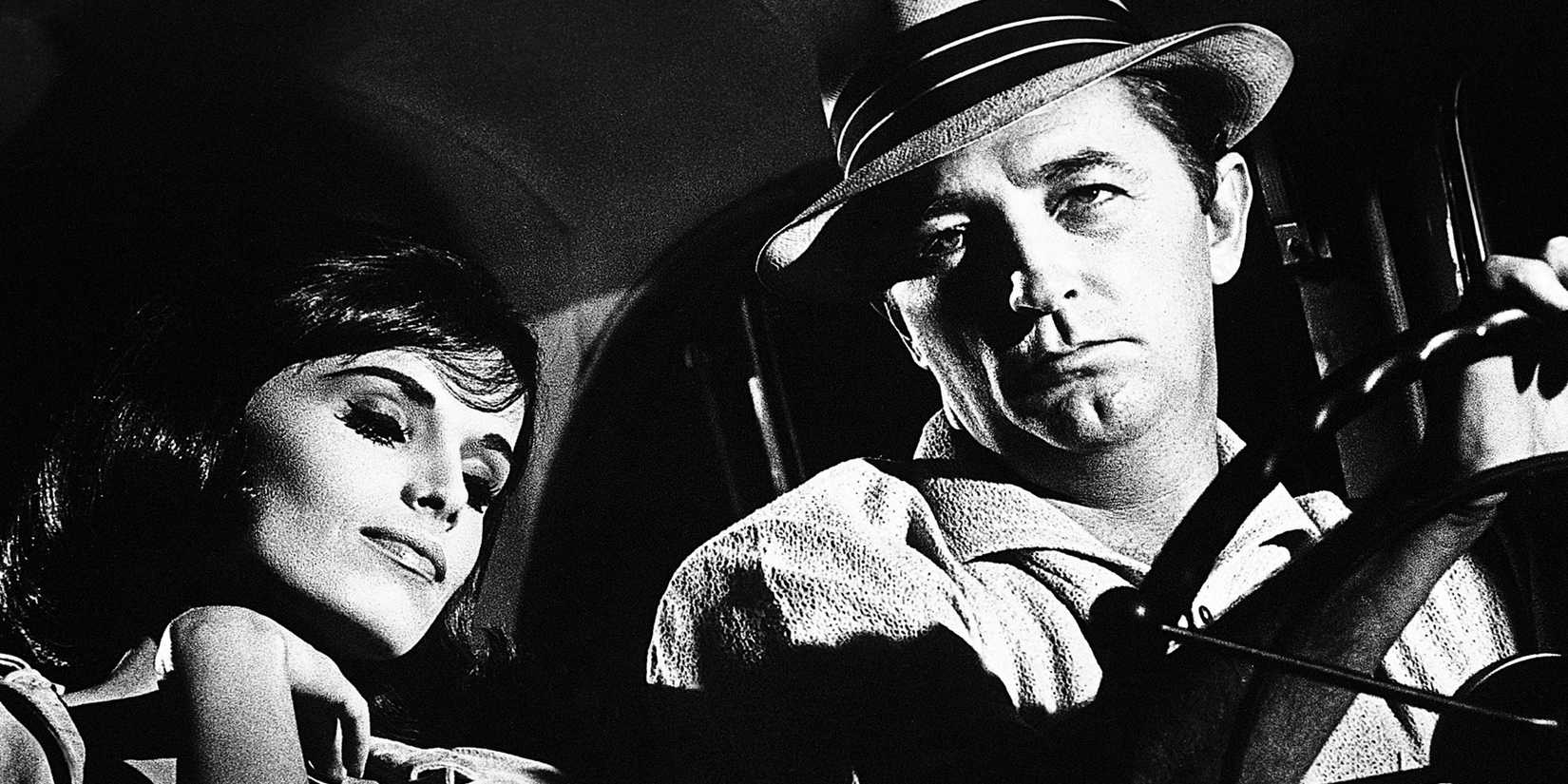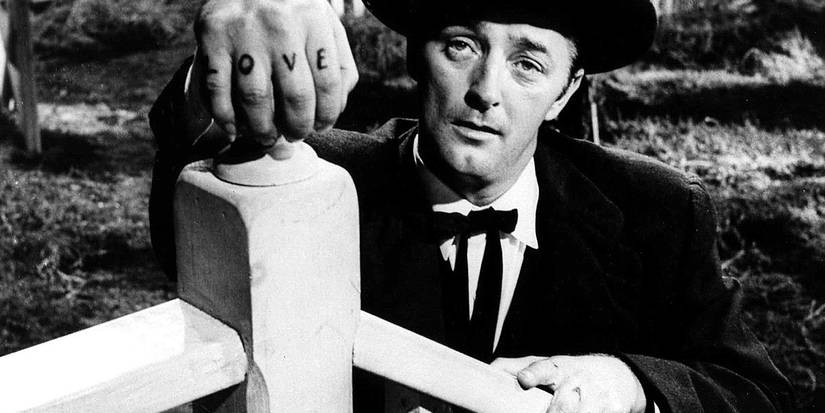Those who immediately dismiss older movies are doing themselves a huge disservice, as there were plenty of classic thrillers that are just as good as anything being released today. The history of cinema boasts incredible movies from all-time great directors who laid the groundwork for modern thrillers and broke through the boundaries of acceptability.
From dark and depraved film noirs to murderous plots tapping into the most troubling aspects of human nature, thrillers have been drawing viewers in with nail-biting stories of crime and betrayal for decades. Even though thrillers may be in black-and-white and their dialogue might feel old-fashioned, these thrillers are just as good as anything you’ll see in the theater.
In A Lonely Place (1950)
Humphrey Bogart became a Hollywood legend through all-time great romances, such as Casablanca, and film noir classics, including The Big Sleep. However, it was In a Lonely Place that he delivered his most interesting performance. With dark intensity, Bogart played the troubled screenwriter Dixon Steele, who becomes increasingly obsessed over a young woman named Laurel Gray (Gloria Grahame.)
In a Lonely Place showcases a man in a state of psychological unraveling and was a surprisingly modern take on fragile masculinity and domestic violence. As a powerful thriller that blends drama, mystery, and murder with stylish black-and-white cinematography, this story of a man on the verge of a mental breakdown is as good as anything that’s being made today.
Strangers On A Train (1951)
The premise of Alfred Hitchcock’s Strangers on a Train was a simple yet incredibly intriguing one, as two strangers set out to murder the most hated person of the other. With neither having a motive for the killing, their ingenious plan was to commit the perfect crime and get away with murder.
Strangers on a Train tapped into Hitchcock’s consistent theme of the darkness hidden within everyday society as the tennis star Guy Haines found himself embroiled in a murder plot when a psychopathic stranger agreed to kill his wife. As one of Hitchcock’s finest works, Strangers on a Train represented a significant turning point in his transformation from a good director into a truly great one.
M (1931)
The father of German Expression, Fritz Lang, laid the foundations for film noir and the future of thrillers with his hugely influential film M. This story of a city’s police force coming together to track down a child murderer was a landmark release that featured an outstanding performance from Peter Lorre as the villainous Hans Beckert.
M was not just a nail-biting thriller but also a powerful piece of social critique exploring the perils of neglecting one’s children. As a film that remains shocking almost a century after its release, M proves the enduring power of cinema and that even decades later, great movies can still enthrall and disturb.
Gaslight (1944)
While most will be familiar with the term ‘gaslighting,’ many are unaware that the phrase actually comes from this dark story about a husband subtly manipulating his young wife into believing she’s going insane. Based on a 1938 play, Gaslight featured an incredible performance from Ingrid Bergman as Paula Alquist, in a story that was surprisingly dark for its time.
Bergman captured the mental anguish of a woman questioning her own sanity in a story that didn’t need flashy special effects to be deeply affecting. As a thought-provoking look into paranoia and confusion, Gaslight stood in stark contrast to the wholesome depictions of marriage most commonly seen during its era and was a groundbreaking look at issues of domestic abuse.
Rear Window (1954)
Only Alfred Hitchcock could turn a story about a wheelchair-bound man looking out his window into one of the most acclaimed and iconic thrillers of all time. Rear Window starred James Stewart as the injured pH๏τographer Jeff Jefferies and showcased him slowly being convinced that a murder has been committed across the street.
The suspense of Rear Window builds as Jeffries pays close attention to the habits of his neighbors, which draws the audience into his hypothesis. There was never a dull moment in Rear Window, proving that a good script, strong performances, and an excellent premise are all that’s needed to make an all-time great thriller.
The Wages Of Fear (1953)
The Wages of Fear stands as one of the most suspenseful and intense thrillers ever made. Telling the story of four down-on-their-luck Europeans hired by an American company to drive trucks filled with nitroglycerin needed to extinguish a fire, the nerve-racking intensity came from the fact that things could turn explosive at a moment’s notice.
With fast-building tension, The Wages of Fear captured the heart-racing nature of later action classics, such as Speed, decades before that film was released. By showing how disenfranchised men are forced to put their lives on the line for the sake of their livelihoods, The Wages of Fear acted as a thought-provoking commentary on issues of class.
Cape Fear (1962)
Although many are familiar with Scorsese’s 1991 remake of Cape Fear, starring Robert De Niro, the original 1962 film was actually even better. With Robert Mitchum delivering a truly unhinged performance as the deranged ex-convict Max Cady, this classic thriller follows his attempts to enact his revenge on the attorney (Gregory Peck) who put him away in the first place.
Cape Fear told an incredibly dark story for its time, and Cady’s implied history of violent Sєxual ᴀssault made him all the more terrifying. By forcing audiences to confront the most heinous aspects of human nature, Cape Fear was a groundbreaking thriller that laid the groundwork for modern revenge stories by pushing the boundaries further than they had ever been before.
The Night Of The Hunter (1955)
Director Charles Laughton only ever made one feature film, the undisputed masterpiece of the thriller genre, The Night of the Hunter. However, this incredible film was underappreciated in its own time, as viewers misunderstood its intensity and rejected the dark and powerful performance of Robert Mitchum as a cunning serial killer.
The Night of the Hunter told the story of a killer pursuing two children to steal $10,000 from their late father. While the film holds up incredibly well today, the problem was that it was decades ahead of its time, and the transgressive nature of its story and performances meant that audiences struggled to interpret its dark sensibilities.
What Ever Happened To Baby Jane? (1962)
Part of the reason that What Ever Happened to Baby Jane? holds up so well today is because the intense feud between its stars, Bette Davis and Joan Crawford, was genuine. Telling the story of a jealous sister and the resentment she holds, Davis starred as the former child starlet Jane Hudson, while Crawford played her wheelchair-bound sister Blanche.
By bringing together two of Hollywood’s biggest stars, What Ever Happened to Baby Jane? stood out as a dark commentary on celebrity and rivalry as Davis played up the campy grotesqueness of Jane’s character. The behind-the-scenes drama of the film was just as interesting as the movie itself, and it even served as the inspiration for the 2017 miniseries Feud.
Vertigo (1958)
In a career filled with extraordinary thrillers, Vertigo stands as Alfred Hitchcock’s masterpiece and was even voted the greatest movie ever in Sight & Sound magazine’s 2012 poll. With James Stewart stepping outside of his all-American everyman persona to play a much darker character whose life is overtaken by obsession, this dark narrative became increasingly twisted as the runtime progressed.
What starts as a standard story of a private detective investigating the behavior of his acquaintance’s wife soon devolves into an intense love story of anguish and control. Vertigo received a mixed reception when it was released, but looking back, it represents the pinnacle of the thriller genre and stands as one of the most absorbing films of all time.















